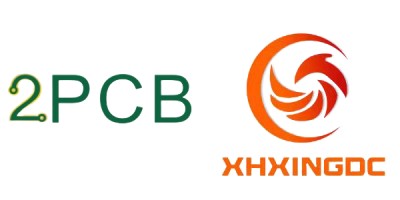With the rapid development of electronic technology and the widespread application of wireless communication technology in various fields, high frequency, high speed, and high density have gradually become one of the significant development trends of modern electronic products. The high-frequency and high-speed digitization of signal transmission has forced PCBs to move towards micro-holes and buried/blind holes, refinement of wires, and uniform and thin dielectric layers. High-frequency, high-speed, high-density multi-layer PCB(HDI PCB) design technology has become an important research field. In this article, we will mainly learn about some practical skills in high-frequency PCB design.
High frequency PCB
For high frequency, many people understand it as a higher signal frequency. Although this view cannot be said to be wrong, for high-speed electronic design engineers, the understanding should be deeper. In addition to caring about the natural frequency of the signal, we should also consider When a signal is transmitted, it is accompanied by the influence of higher-order harmonics. The following formula is generally used to define the transmission bandwidth of the signal, sometimes also called the EMI transmission bandwidth: F=1/(Tr*π), F is the frequency ( GHz); Tr (nanosecond) refers to the rise time or fall time of the signal.
Usually when F>100MHz, it can be called a high-frequency circuit. Therefore, in a digital circuit, whether it is a high-frequency circuit does not depend on the frequency of the signal, but mainly depends on the rising edge and falling edge. According to this formula, it can be deduced that when the rise time is less than about 3.185ns, it can be considered a high-frequency circuit.
In the PCB industry, the emission bandwidth F>300MHz is called high-frequency signal, and the signal at this frequency is also called microwave.
High frequency PCB design skills
(1) Multilayer board wiring
High-frequency circuits tend to be highly integrated and have high wiring density. The use of multi-layer boards is not only necessary for wiring, but also an effective means to reduce interference. In the PCB Layout stage, a reasonable selection of the printed board size with a certain number of layers can make full use of the middle layer to set up shielding, better achieve nearby grounding, effectively reduce parasitic inductance and shorten the signal transmission length, and at the same time maximize All these methods are beneficial to the reliability of high-frequency circuits, such as significantly reducing signal cross-interference.
(2) Avoid loops formed by wiring
All types of high-frequency signal wiring should try not to form loops. If it cannot be avoided, the loop area should be kept as small as possible.
(3) The less lead bends, the better
The leads of high-frequency circuit wiring are best to use straight lines. If they need to be turned, they can use 45-degree broken lines or arc turns. This requirement is only used to improve the fixation strength of the copper foil in low-frequency circuits, but in high-frequency circuits, this requirement is met. One requirement can reduce the external emission and mutual coupling of high-frequency signals.
(4) The less alternation between lead layers, the better
The so-called “the fewer inter-layer alternations of leads, the better” means that the fewer vias (Via) used in the component connection process, the better. It has been measured that one via can bring a distributed capacitance of about 0.5pF. Reducing the number of vias can significantly increase speed and reduce the possibility of data errors.
(5) The shorter the lead, the better
The radiation intensity of the signal is proportional to the length of the signal line. The longer the high-frequency signal lead, the easier it is to couple to components close to it, so for signals such as clocks, crystal oscillators, DDR data, High-frequency signal lines such as LVDS lines, USB lines, and HDMI lines are required to be as short as possible.
(6) Isolate the ground wire of high-frequency digital signals from the ground wire of analog signals
When the analog ground wire, digital ground wire, etc. are connected to the public ground wire, they must be connected with high-frequency choke magnetic beads or directly isolated and selected for single-point interconnection in a suitable place. The ground potential of the ground wire of high-frequency digital signals is generally inconsistent, and there is often a certain voltage difference between the two. Moreover, the ground wire of high-frequency digital signals often contains very rich harmonic components of high-frequency signals. When the digital signal ground wire and the analog signal ground wire are directly connected, the harmonics of the high-frequency signal will be coupled through the ground wire. way to interfere with analog signals. Therefore, under normal circumstances, the ground wires of high-frequency digital signals and the ground wires of analog signals need to be isolated, either by single-point interconnection at a suitable location or by high-frequency choke magnetic bead interconnection.
(7) Add a high-frequency decoupling capacitor to the power pin of the integrated circuit block
A high-frequency decoupling capacitor is added nearby the power pin of each integrated circuit block. Adding high-frequency decoupling capacitors to the power supply pins can effectively suppress interference caused by high-frequency harmonics on the power supply pins.

